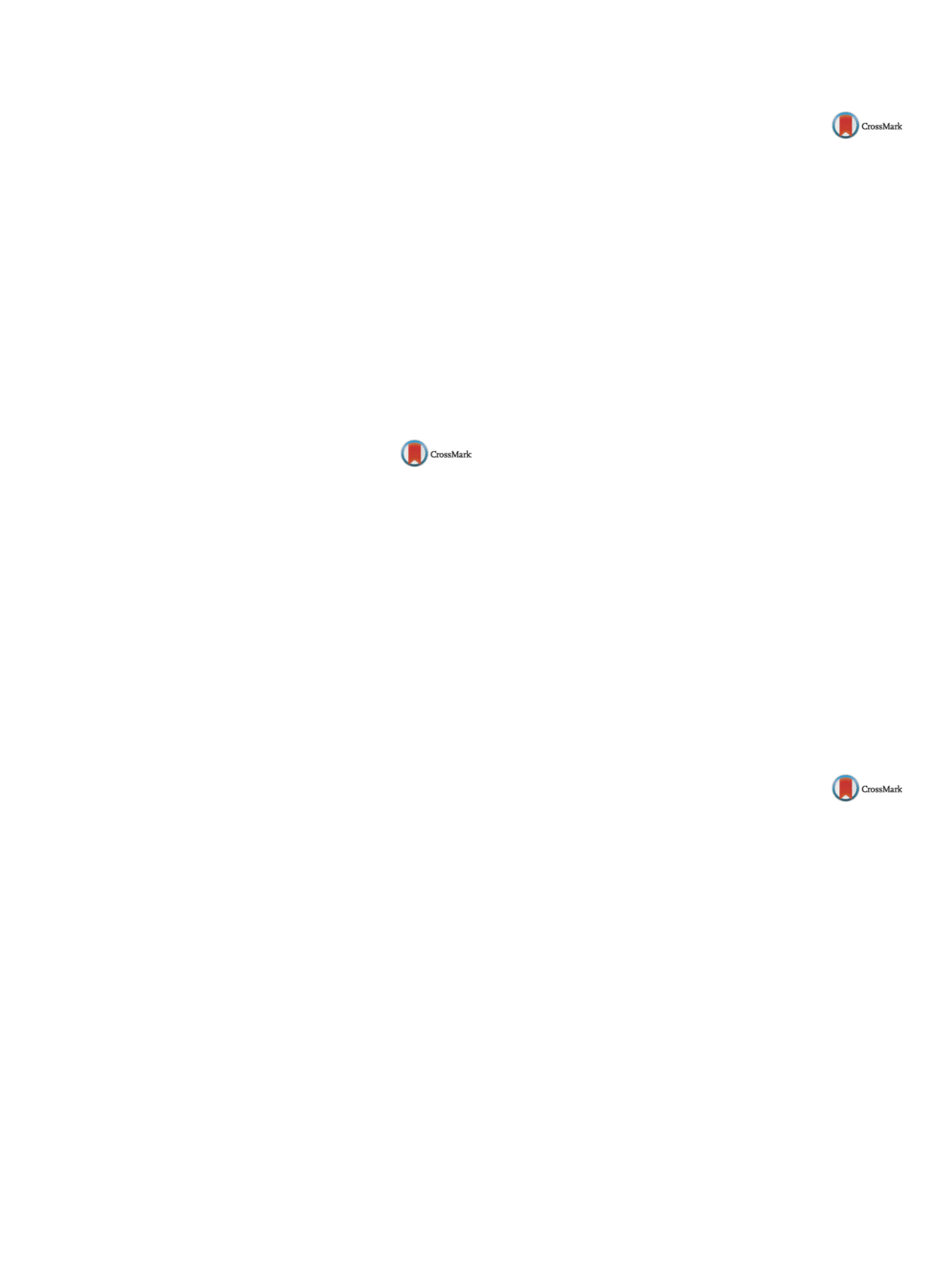

25th European Congress of Psychiatry / European Psychiatry 41S (2017) S847–S910
S865
Methods
Twenty-one AHS participants were compared with 28
non-AHS controls using a between-groups design. All completed a
prospective remembering video procedure (prvp), whichmeasured
event-basedpm. the prvp required the participant first tomemorise
a series of specific action-locations combinations and then to recall
these combinations whilst viewing a CD clip of a busy shopping
high street. Drug use (alcohol, smoking, etc.) and mood (anxiety
and depression) were also measured, as these have been shown to
have a deleterious impact upon PM.
Results
The AHS group recalled significantly fewer event-based
PM combinations on the PRVP compared with the non-AHS control
group (
P
< 0.05). There were no significant differences between the
groups on age, smoking, alcohol use or mood.
Conclusion
These results confirm that a state of alcohol hangover
impedes everyday prospective memory. The wider implications
will be discussed at conference.
Disclosure of interest
The author has not supplied his/her decla-
ration of competing interest.
http://dx.doi.org/10.1016/j.eurpsy.2017.01.1730EV1401
Audit of near-fatal overdoses (NFOs)
in patients on treatment via substance
misuse services (SMS)
U. Javed
∗
, R. Moore , C. McIntosh
Forth Valley Royal Hospital, Psychiatry, Larbert, United Kingdom
∗
Corresponding author.
Introduction
In theNHS ForthValley (Central Scotland) substance
misuse service (SMS), there is an arrangement whereby the details
of individuals administered naloxone for overdose via the ambu-
lance service are passed to the SMS. Each patient has an allocated
keyworker (nurse). It is accepted that near fatal overdoses (NFOs)
are possible precursors to fatal overdose and drug-related deaths.
Objectives
To assess:
– if the information is being disseminated appropriately;
– service response and follow-up for individuals;
– patterns which might influence prescribing practice.
Methods
A list of NFOs of known patients for the previous two
years was acquired from the ambulance service. There was a ret-
rospective review of the SMS prescribing database and clinical
casenotes.
Results
Patterns:
– 81% male;
– 53% aged < 40;
– 14% of NFO’s involved those in titration phase;
– 86% were prescribed methadone. Methadone average dose 57mg
(20–80mg) and 54% were prescribed > 60mg/day.
Receipts of information:
– sixty-one percent of keyworkers were notified.
Service response:
– in most cases when the keyworkers was informed, there was
prompt action to contact and review patients (0–21 days). How-
ever, only 21% had a timely review (within 1 month) by a doctor
following NFO.
Conclusion
There needs to be an improvement in the dissemina-
tion of information between the ambulance service, administrative
staff and keyworkers. Most NFO patients were prescribed > 60mg
of methadone. There needs to better identification of “harm-
reduction” prescribing whereby methadone doses should be
reduced at times of ongoing drug use. Fourteen percent of NFO’s
involved those in titration phase (twice weekly reviews) which
provides an opportunity to screen and intervene for potential NFOs.
Disclosure of interest
The authors have not supplied their decla-
ration of competing interest.
http://dx.doi.org/10.1016/j.eurpsy.2017.01.1731EV1402
Sexual dysfunctions in injectable drug
users in Tunisia
J. Jihene
∗
, M. olfa , Z. Haifa
Razi Hospital, the Outpatient Service of the Hospital Razi, Mannouba,
Tunisia
∗
Corresponding author.
Introduction
The drug addiction in the buprenorphin with high
dosage (BHD) by injectable way, represents a real plague in
Tunisia, consequently, we are confronted with diverse complica-
tions including the sexual dysfunctions.
Objectives
Identify and determine prevalence of the sexual dys-
functions among this population.
Methods
It is a transverse, descriptive study. We looked for sex-
ual dysfunctions by using the international index of the erectile
function (IIEF 15), among a population of 52 male users of BHD by
injectable way.
Results
The average score in the IIEF-15 was 36.65 with a stan-
dard deviation of 20.87, a negative correlation with duration and
the quantity of consumption was noted.
The average erectile function (EF) was 15.63
±
9.26, which corre-
sponds to a mild to moderate erectile dysfunction, whereas 31%
had a severe dysfunction.
The average score of the orgasmic function (OF) was 6.35
±
3.52.
The average score of the sexual desire (SD) was 4.27
±
2.90.
The average score of the satisfaction with sexual intercourses (IS)
was 5.77
±
4.54, an alteration was noted in 96% of the cases, which
was correlated with the severity of the consumption.
The average score of the global satisfaction (OS) was altered at 92%
of the subjects.
The majority of the subjects brought back the chronology of their
disorders in after the consumption of BHD. No patient consulted in
sexology.
Conclusion
It is thus important to educate stakeholders, on the
frequency of sexual dysfunctions and the importance of their
screening to improve the management of this problem.
Disclosure of interest
The authors have not supplied their decla-
ration of competing interest.
http://dx.doi.org/10.1016/j.eurpsy.2017.01.1732EV1403
Addictology consultations: Experience
of the outpatient department of the
Razi hospital
J. Jihene
∗
, M. Olfa , Z. Haifa
Razi Hospital, the Outpatient Service of the Hospital Razi, Mannouba,
Tunisia
∗
Corresponding author.
Introduction
The addiction is a social and universal phenomenon.
Its coverage is quite recent in Tunisia. It requires a facilitation of the
access to healthcare, with broadcasting of the policy of reduction
of risks.
Objectives
Raise a current situation of the addicting conducts of
our patients.
Methods
Retrospective descriptive study, concerned the patients
having an addiction in psychoactive substances followed in the
external consultation of the hospital Razi between November 2014
and September 2016.
Results
The average age was 34
±
10.23 years.
Among the patients, 93.7% was of sex male.
Almost half immigrated in secret in Europe.
Seventy-five percent had criminal record.
The most used product was tobacco followed by alcohol, cannabis,
benzodiazepines, Trihexyphenidyl and the opiates.
The buprenorphin is the most consummate opiate in misuse.


















